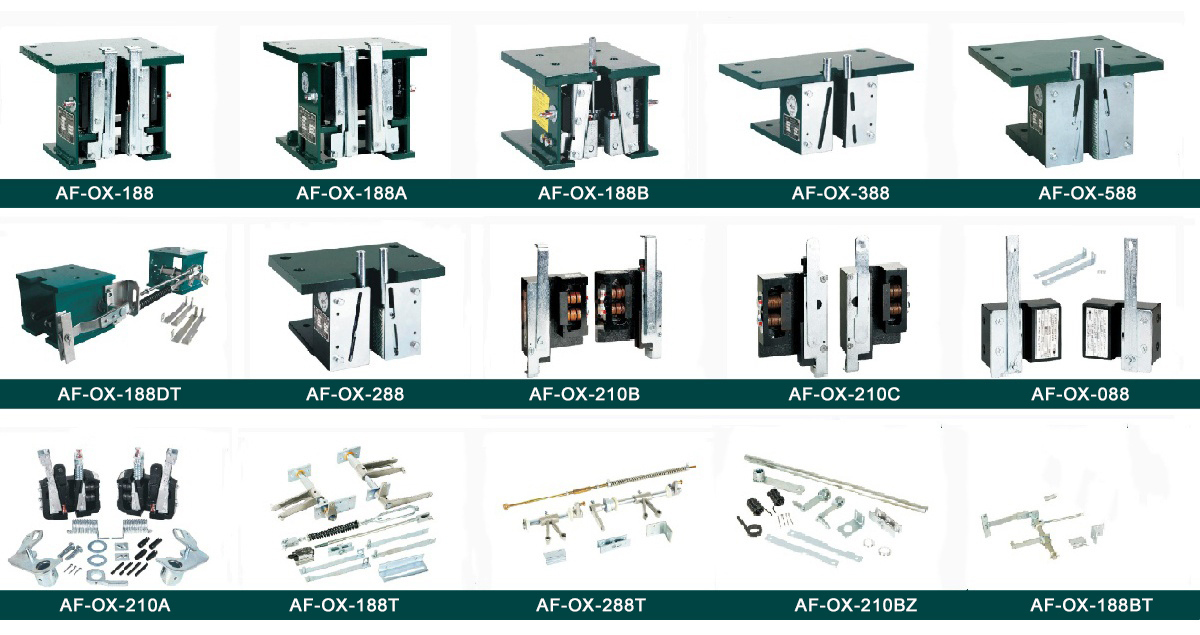Safety gear are safety protection devices for elevators parts. The elevator safety gear device is a kind of safety device which can stop the car and clamp it on the guide rail when the elevator speed exceeds the rated speed set by the elevator speed governor under the control of the speed governor, or when the suspension rope breaks and loosens. It provides effective protection for the safe operation of the elevator, and is generally installed on the car frame or counterweight frame.
There are three types of safety gear, such as block type, eccentric wheel type and roller type, which can be divided into instantaneous type and progressive type according to the different stop speed.
The instantaneous safety gear operates by pressing against the guide rails through an eccentric block, wedge block, and rollers, without using any elastic components, to constrain their braking and the length of braking, hence it is also known as a rigid safety jaw. This safety gear rapidly applies a load to the elevator during braking and stopping processes, and the braking distance is very short. It is typically suitable for elevators with speeds above 1 m/s.
The progressive safety gear applies a certain pressure on the guide rails during the braking process, with the stopping distance depending on the braking weight and the car speed when the safety valve is activated. The braking force essentially remains consistent once the safety gear is fully activated. The maintenance of this braking force is achieved by constraining the elastic elements applying the force, and the device brakes using a determined brake after activation, resulting in a braking distance that is much greater than that of the instantaneous safety gear. Therefore, it is also known as an elastic sliding type safety gear.


